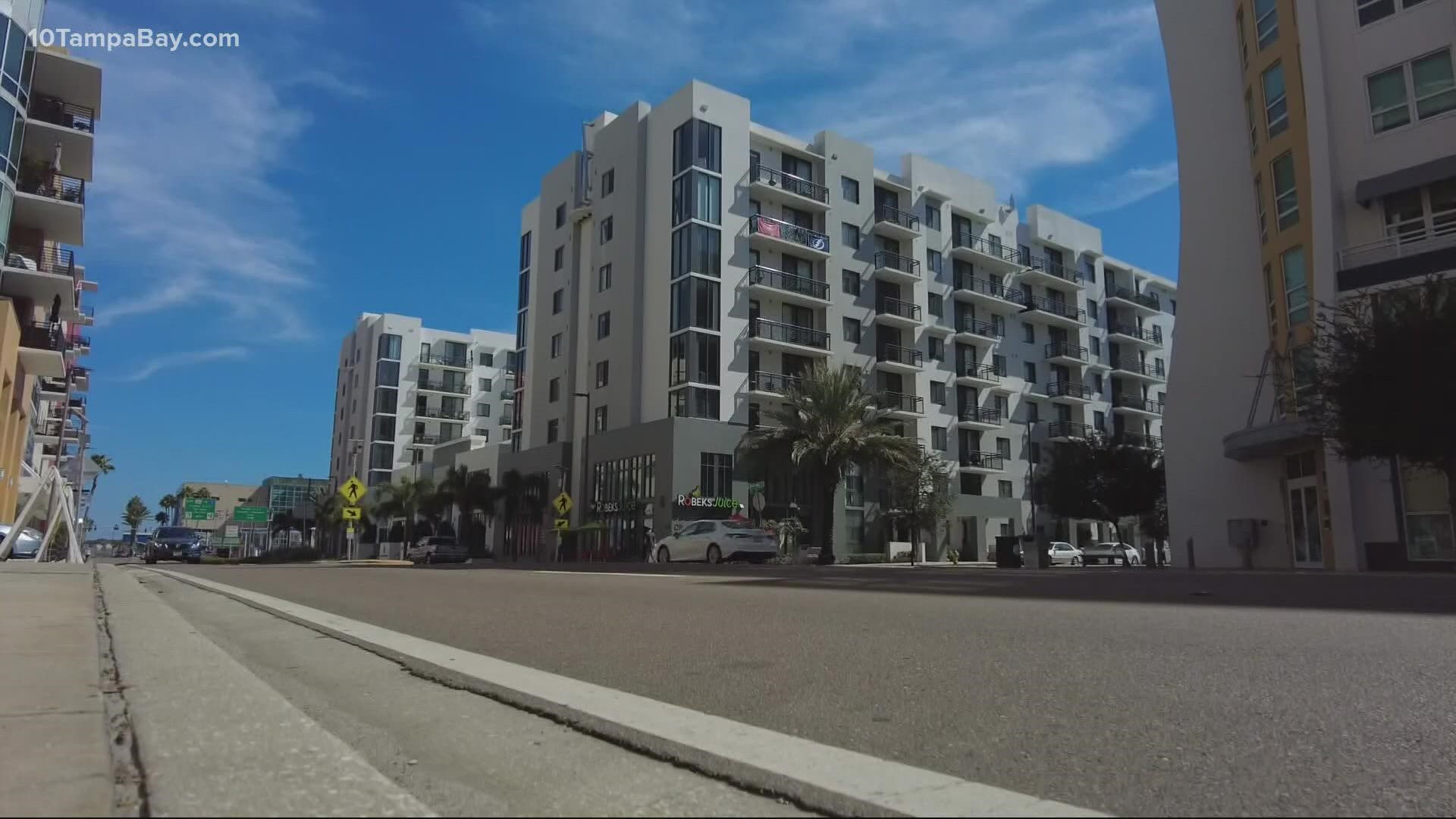TAMPA, Fla. — Rent prices are still top of mind for many of us throughout the Tampa Bay area.
In addition to more people moving to the Sunshine State, inflation and other factors continue to drive up demand and prices among an increasingly-smaller housing market.
And those price hikes all add up to one hard truth: the average renter in the city of Tampa is spending 42 percent of their income to keep a roof over their head. That's according to a report from Online Mortgage Advisor.
Data gathered by Online Mortgage Advisor shows between 2017 and 2021, 48 percent of cities around the world became less affordable for renters.
Analysis from Realtor.com shows the median rent from December 2020 to December 2021 went up 19.3 percent in the United States.
The Tampa-St. Petersburg-Clearwater metro area saw the second-highest median rent increase in the country, with prices rising to $2,038 or 35 percent than the previous year.
The same analysis shows the Tampa-St. Petersburg-Clearwater metro area is also the second-fastest-growing metro area for rent in the U.S. The area saw a 25.6 percent rent growth in 2021.
In 2021, the average year-over-year growth rate for rent surged to 10.1 percent nationally, Realtor.com says. In comparison, that rate was only about 1.9 percent in 2020, data shows.
The Associated Press says rising rents are an increasing driver of high inflation that has become one of the nation’s top economic problems. Labor Department data, which covers existing rents as well as new listings, shows much smaller increases, but these are also picking up. Rental costs rose 0.5 percent in January from December, the Labor Department said last week. That may seem small, but it was the biggest increase in 20 years – and will likely accelerate.
Economists worry about the impact of rent increases on inflation because the big jumps in new leases feed into the U.S. consumer price index, which is used to measure inflation.
Inflation jumped 7.5 percent in January from a year earlier, the biggest increase in four decades. While many economists expect that to decrease as pandemic-disrupted supply chains unravel, rising rents could keep inflation high through the end of the year since housing costs make up one-third of the consumer price index.
Experts say many factors are responsible for astronomical rents, including a nationwide housing shortage, extremely low rental vacancies and unrelenting demand as young adults continue to enter the crowded market.
According to the U.S. Census Bureau, rental vacancy rates during the fourth quarter of 2021 fell to 5.6 percent, the lowest since 1984.
Meanwhile, the number of homes for sale has been at a record low, contributing to ballooning home prices that have caused many higher-income households to remain renters, further upping demand.
Realtor.com projects rent growth in 2022 to be slower in comparison to 2021 but still rise 7.1 percent over the course of the year.

